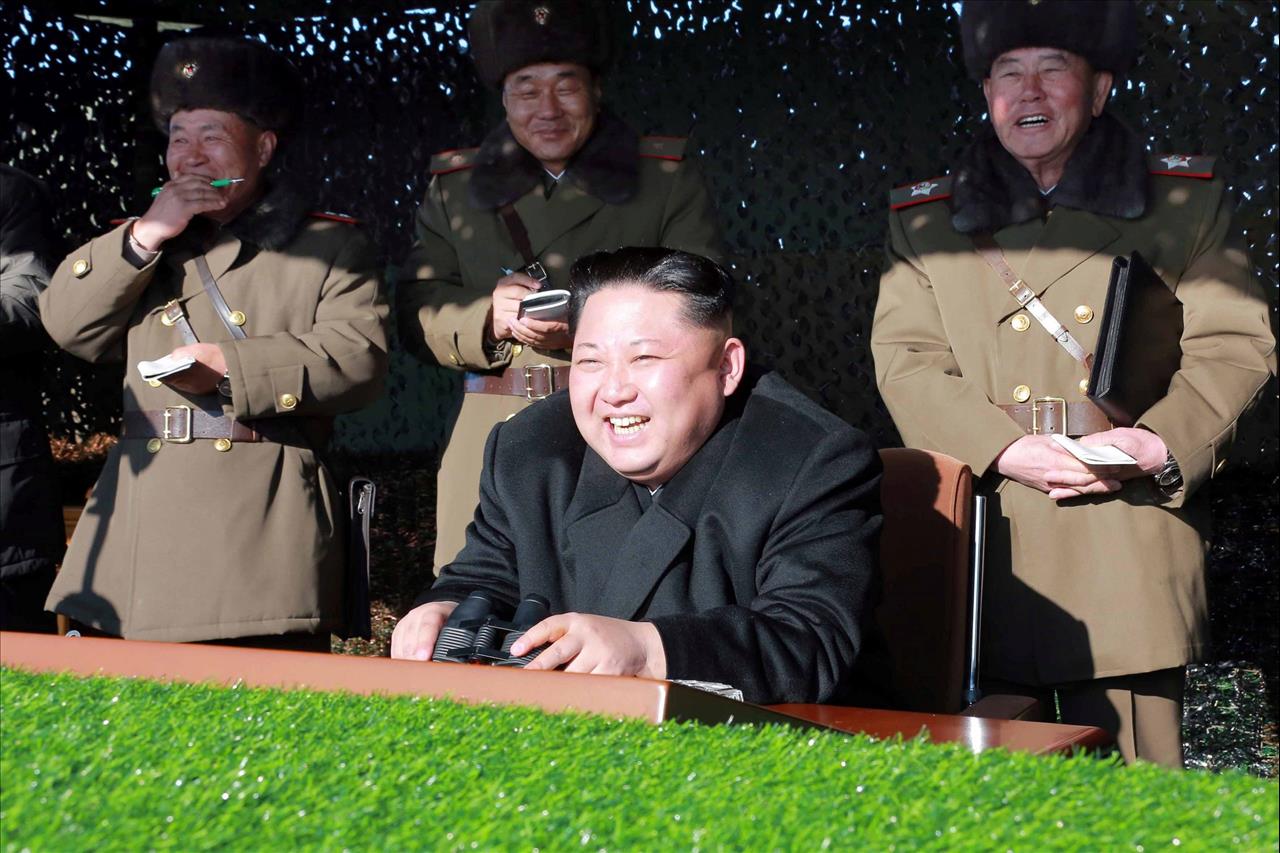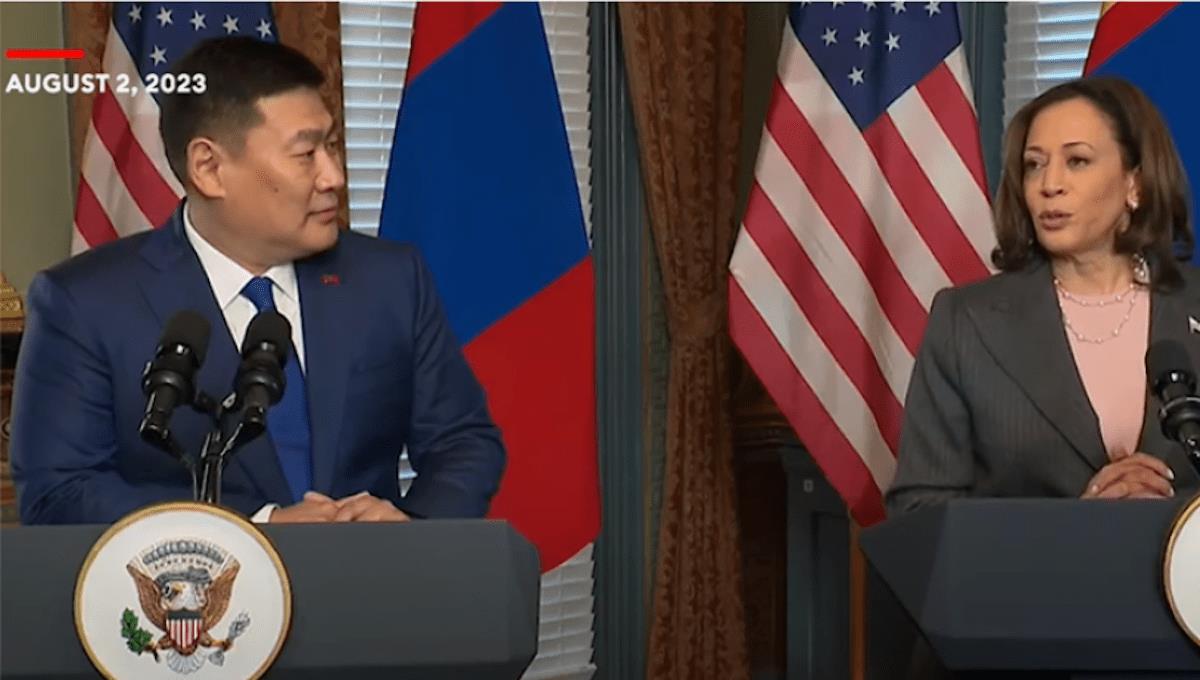The US also has 2.3 million tons of rare earths but it has avoided exploring them due to environmental issues. This was thought to give Beijing some leverage in the current tech wars: Sanction China and we'll whack your rare earths supply chain.
Enter Mongolia, the independent former Soviet-bloc country that borders China and Russia. A 2009 estimate by the US Geological Survey said Mongolia could have 31 million tons of rare earths reserves. The country has the potential to become a key rare earth exporter but it lacks the capital and equipment to explore them.
And now Mongolia has signed an“open skies” agreement with the United States. Predictably the move is being criticized by many Chinese commentators, who say it will hurt Beijing's plan to use rare earths export control to retaliate against Washington's technology sanctions.
US Transportation Secretary Pete Buttigieg and Mongolia Road and Transport Development Minister Byambatsogt Sandag on August 4 signed an agreement that aims at“expanding options for travelers and shippers, and encouraging closer people-to-people ties” between the two countries.
Since the launch of its open skies policy in 1992, the US has liberalized international aviation markets with 132 foreign partners around the world. China and Russia are not on its list.
In an official visit to Washington, Mongolian Prime Minister Oyun-Erdene Luvsannamsrai met with US Vice President Kamala Harris at the White House on August 2. Luvsannamsrai said Mongolia will strengthen its strategic“third neighbor” partnership with the US. Both countries agreed to explore the idea of mining Mongolia's rare earths and critical minerals for use in US high-technology products.
Chinese pundits said Mongolia failed to take Beijing's feelings into consideration as Luvsannamsrai arrived in the US on August 1, a day when China's export restrictions of gallium and germanium compounds took effect.
Latest stories

marcos defies china amid new s china sea tensions

why it's so hard to stop north korea's crypto hackers

fear of ai in the west is misdirected
Gallium and germanium are not defined as rare earths as they do not occur naturally in the earth's crust but are created as byproducts from the aluminum and zinc refining streams, respectively. The restrictions were announced by China on July 3 to counteract the US curbs.
It was thought that rare earths could be next. Xie Feng, the Chinese ambassador to the US, said last month that China would retaliate if Washington imposed more sanctions on China. Since then, some commentators have been saying that export control of rare earths could be an option.
“The US and other countries urgently need to find new suppliers” of rare earths, says Jiang Fuwei, a Hainan-based military columnist, in an article published on Monday.“In this case, Mongolia, with its rich rare earths resources, has entered the sights of the West.”
He adds that“Washington is now sparing no effort to win over Mongolia, which is adjacent to China in the south and Russia in the north and has the potential to become a strategic point against its neighbors. It also wants to disrupt the Power of Siberia-2 gas pipeline and other projects that are crucial to China and Russia.”
Jiang gives his imagination full rein, saying that China and Russia should pay attention to whether the US will use non-government organizations to infiltrate Mongolia, incite social unrest in the country and disrupt Mongolia-China-Russia projects. He says if the US pushes forward a“color revolution” in Mongolia, such political risks could spill over to China and Russia and threaten their national security.
He adds that it is a top mission for China and Russia to ensure that Mongolia will not lean towards the US, whether by forming economic ties with or asserting influence over the mineral-rich nation.
Ahead of more US curbs
Originally the Mongolian prime minister was set to meet US President Joe Biden but the president was away from Washington on vacation. Biden is expected to sign an executive order to restrict US companies and funds from investing in China's semiconductor, artificial intelligence (AI) and quantum computing sectors later this month.

Mongolia Prime Minister Oyun-Erdene Luvsannamsrai and US Vice President Kamala Harris. Photo: Screenshot / White House news feed
On August 4, US Secretary of State Antony Blinken and Luvsannamsrai signed the Economic Cooperation Roadmap for the strategic Third Neighbor Partnership between the Mongolian and the US governments. They said the roadmap will serve as the foundation for increased commercial and economic ties between the two countries in the coming years.
A Shanxi-based writer published an article with the title“US and Mongolia plan to bypass China and Russia to ship rare earths by flights. Should they seek China's approval?”
“Civil airplanes usually fly at a height between six and 12 kilometres while the internationally-recognized territorial airspace is 100 kms above the sea level,” says the writer.“It means that Mongolia's rare earths transported by the US will enter China's airspace. According to China's aviation rules, foreign flying vehicles must apply to China and get approval before entering its airspace.”
The writer says Mongolia has suggested that it rent a 10-hectare site in Tianjin Port for half a century but China may not agree as this will directly connect Mongolia and the US, especially when the Mongolian side has no plan to pay China any transit fees. He says Mongolia can ship its rare earths to South Korea but they will also pass through territories of China and Russia.
“China does not want to stop Mongolia from making money,” he says.“But at this time, a rare earth cooperation between the US and Mongolia is, in a sense, putting pressure on China. The US hopes to get rid of its dependence on China's rare earth supply chain with the help of Mongolia.”
“In the period when the competition between China and the US is becoming increasingly fierce, Mongolia's move does not take into account China's feelings and positions,” he says, adding that those in the West may be issuing empty checks while they are not good enough to replace China and Russia as Mongolia's good neighbors.
'New Cold War'
After the Qing government collapsed in 1911, Mongolia became independent from the Republic of China. It had been politically influenced by the Soviet Union during the cold war between 1947 and 1991. It has walked on a democratic path since the 1990s but suffered from serious corruption problems.
In recent years, the country has stepped up its anti-corruption fight in a bid to attract more foreign investments.
Luvsannamsrai told the media in the US last week that countries like Mongolia would suffer if the conflicts between the US and China escalated in a so-called new Cold War.
“I fear that the new Cold War will be very different and more difficult from the first Cold War,” he said.“We cannot bear a new Cold War situation.”
He said Mongolia hopes to maintain good relations with both China and the US. He also described
the
US as Mongolia's“guiding Polar Star for our democratic journey.”
He said major powers should be responsible and avoid drastic negative effects on many countries around the world.
Harris said the US and Mongolia will work together on global challenges, including the climate crisis, will uphold democracy and human rights and will address threats to the international rules-based order. She said both countries will work together to strengthen their space cooperation.
Last month, some Chinese commentators criticized Mongolia for adopting SpaceX's Starlink internet services, which they said would pose a potential military threat against China and provide Chinese people a possible way to get around Beijing's strict censorship regime on perceived“harmful” foreign websites.
“Mongolia is willing to become a 'pawn' of the West against China and Russia, but at the same time, it continues to gain economic benefits from China and Russia,” a Sichuan-based columnist says .“Mongolia's moves really make China feel sad.”
While some Chinese pundits and netizens said Beijing and Russia should punish Mongolia, Yan Zeyang, an assistant researcher at the Institute of Northeast Asian Studies, China Institutes of Contemporary International Relations, says in an article that people should have confidence in Sino-Mongolian relations, which will not be changed by Luvsannamsrai's single trip to the US.
Yan says there is a long way to go before Mongolia can really produce rare earths a the country will eventually have to rely on China's refinery and logistics services. He says China is willing to deepen its strategic partnership with Mongolia but it hopes the nation's politicians will stand on the right side on major issues.
read: mongolia-spacex deal provokes a security stir in china
read: interview: mongolian ministers have a revival plan
Follow Jeff Pao on Twitter at
@jeffpao3
Like this:Like Loading... Related